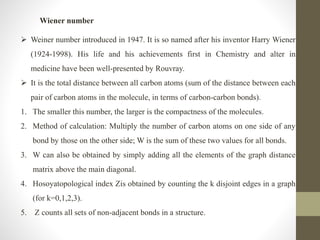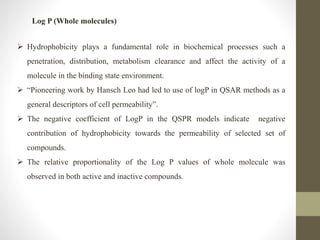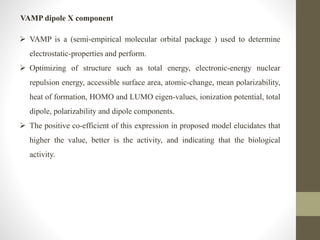The document discusses quantitative structure-activity relationships (QSAR), focusing on various molecular descriptors used to correlate chemical or biological activities with structural features. It details different families of descriptors, including topological, electronic, and molecular shape indices, explaining their calculations and significance in predicting compound behavior in areas like drug design. Additionally, specific indices such as Wiener number, Balaban index, and various lipophilicity measures are highlighted for their relevance in understanding molecular interactions and activities.








![Connectivity indices
The connectivity index order k may be derived from the adjacency matrix and is
normally written as, kχt, The order k is between 0 and 4 and is the number of
connected non-hydrogen atoms which appears in a given sub-structure.
knt
kχt = ∑ [II⸹i ]-1/2
In above equation, ⸹I is the number of simple (i.e., sigma ) bonds of the atom i to
on hydrogen atoms, Sj represents the jth sub=structure of order k and type t, and
knt is the total number of sub-graphs of order k and type t that can be identified
in the molecular structure. The types used are path (p), cluster (c), and path
cluster (pc).](https://image.slidesharecdn.com/descriptors-190919110246/85/2D-QSAR-DESCRIPTORS-9-320.jpg)

















